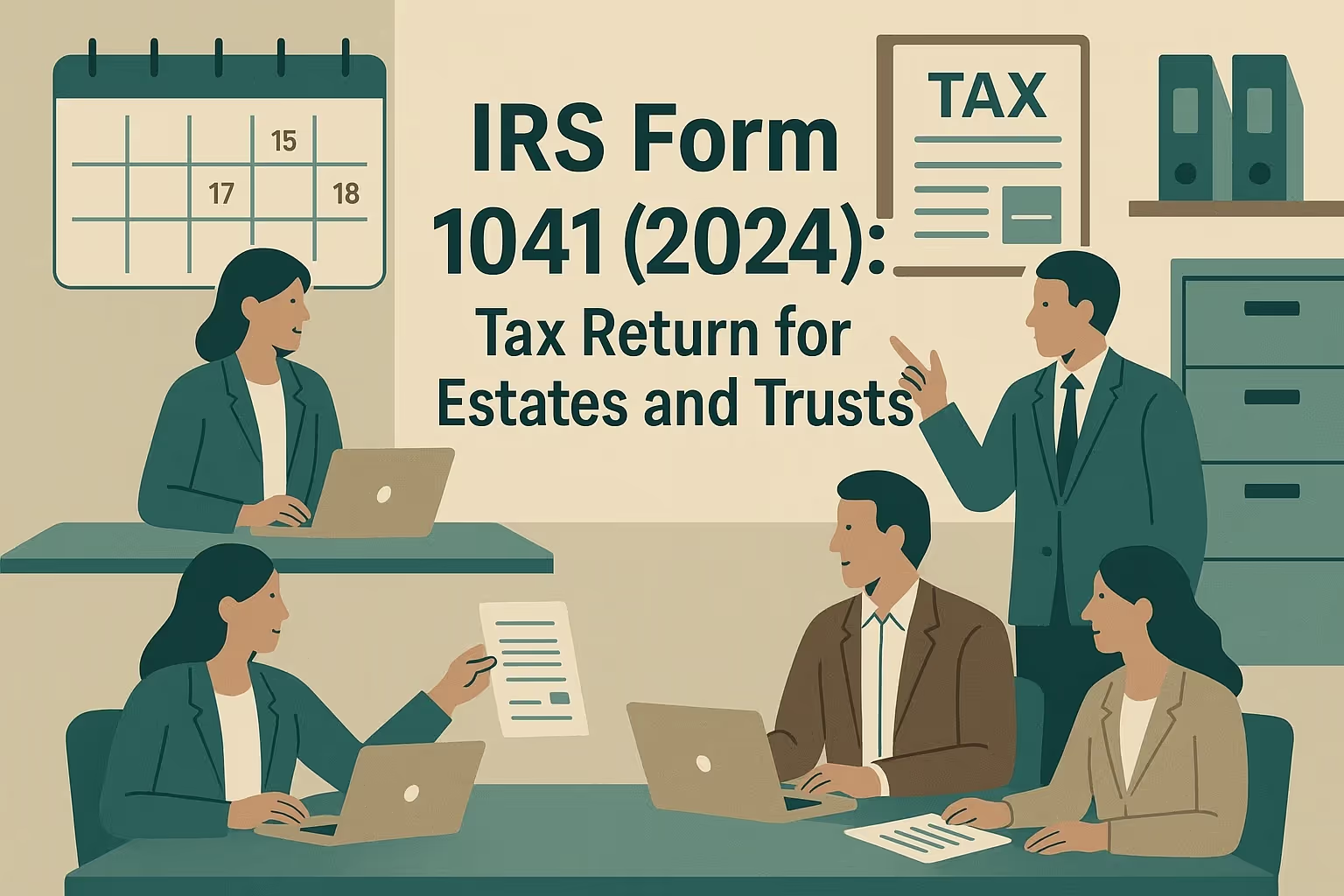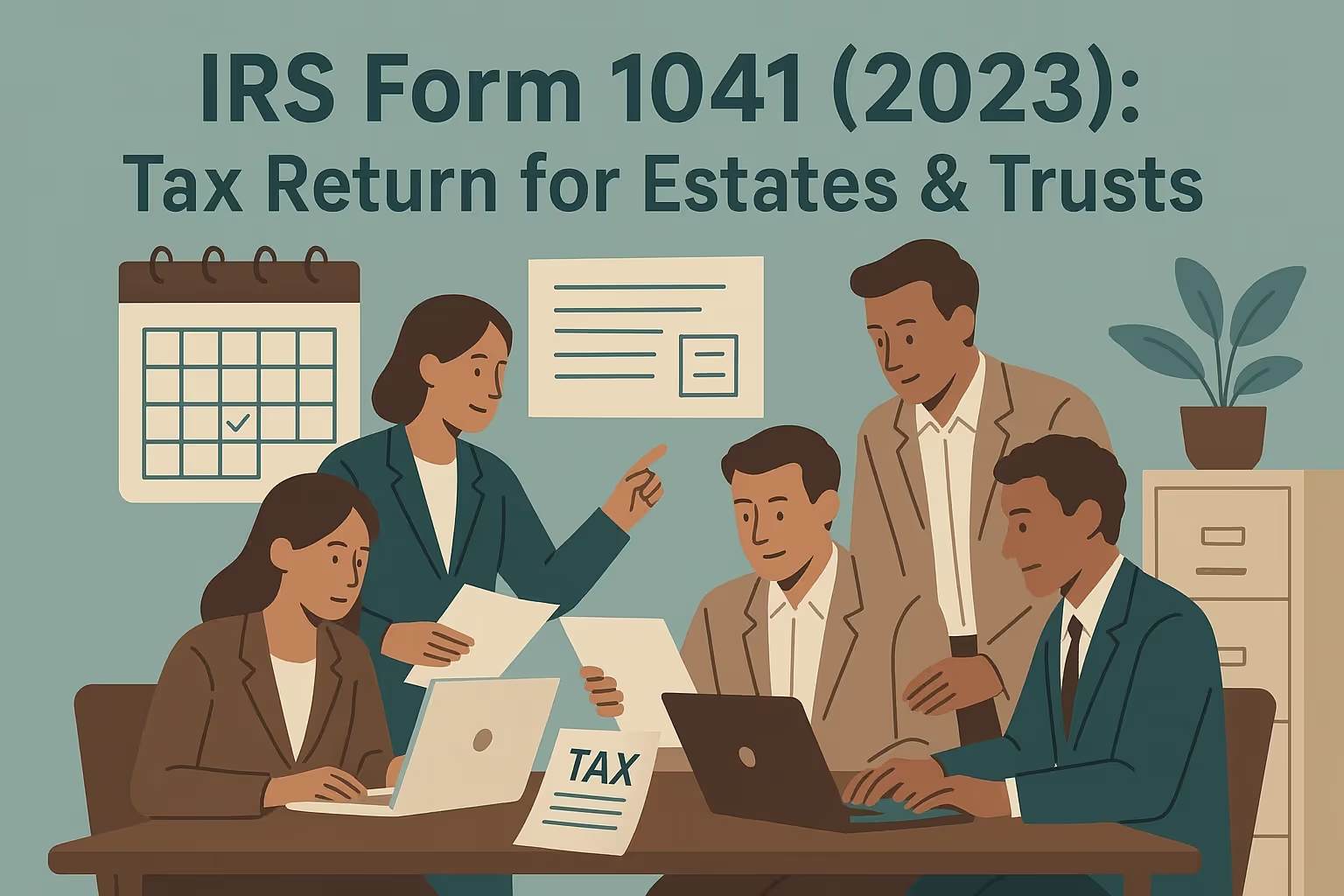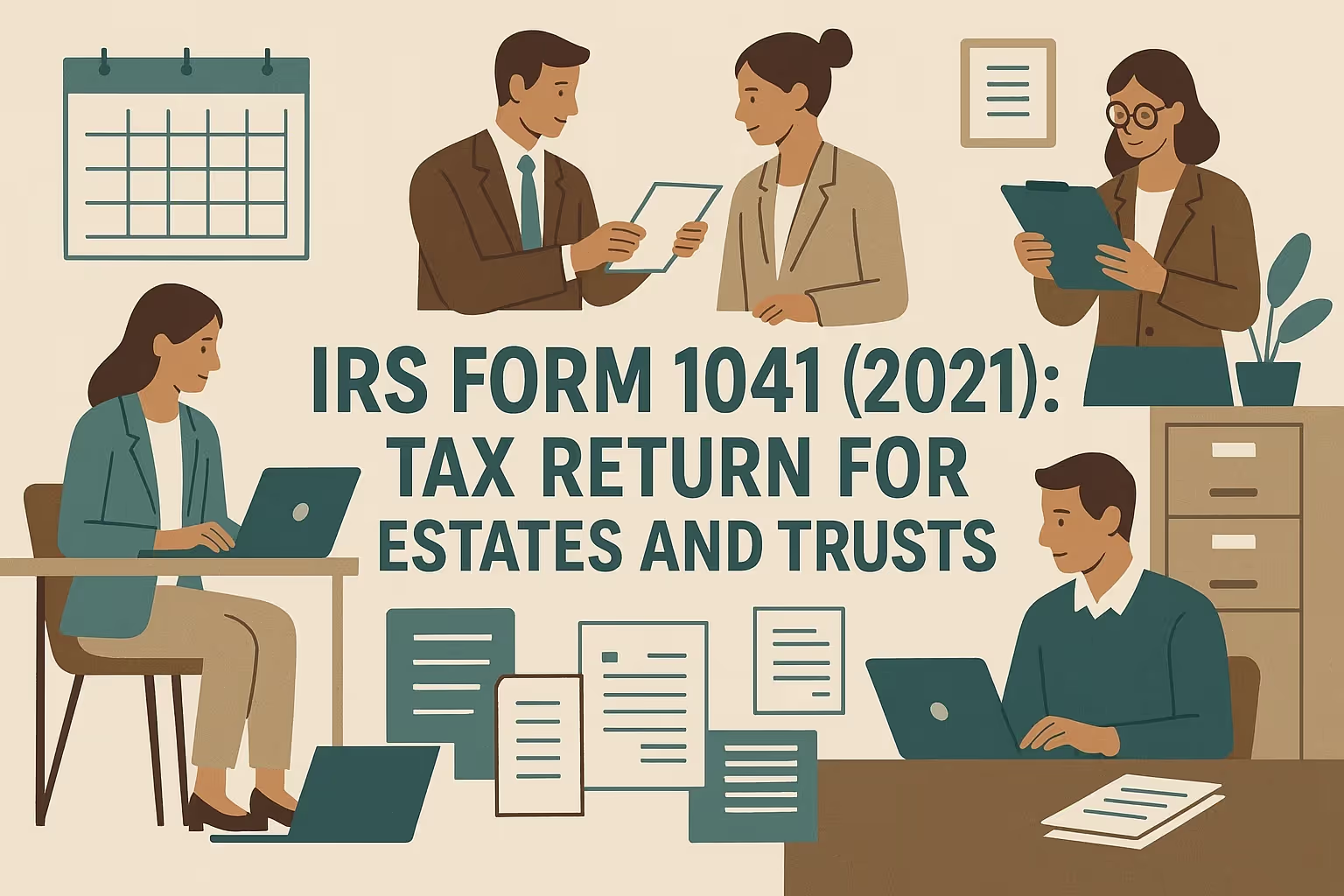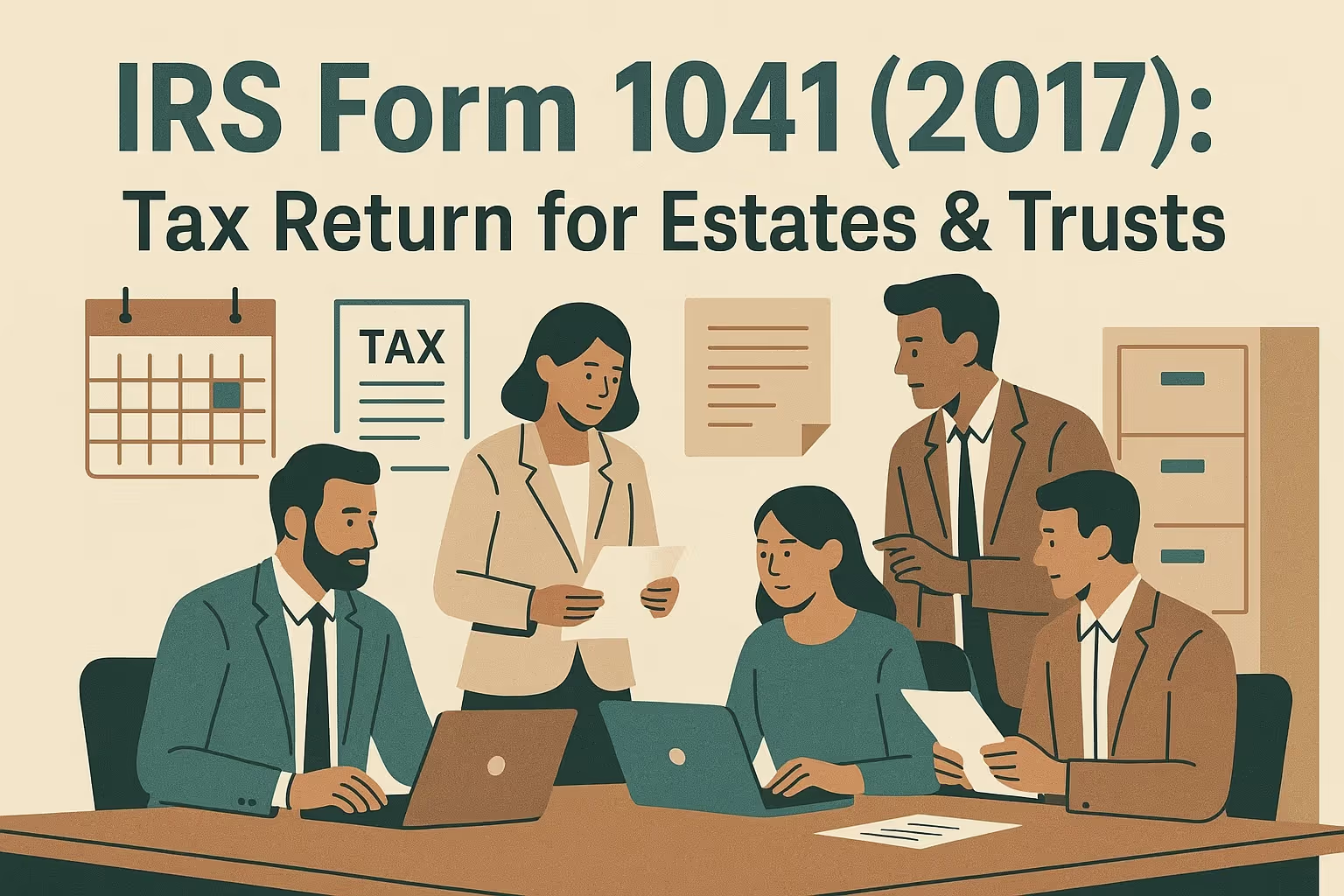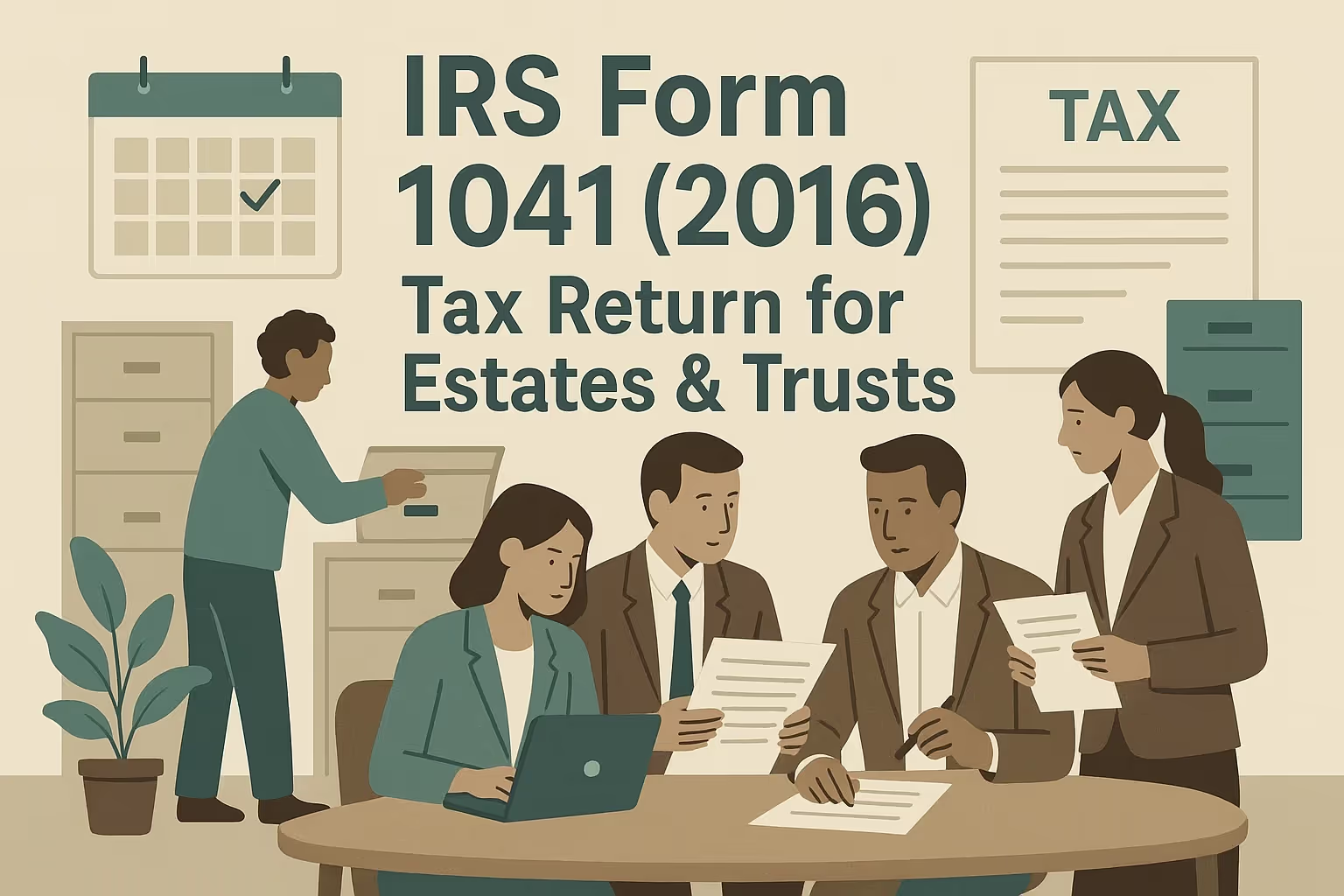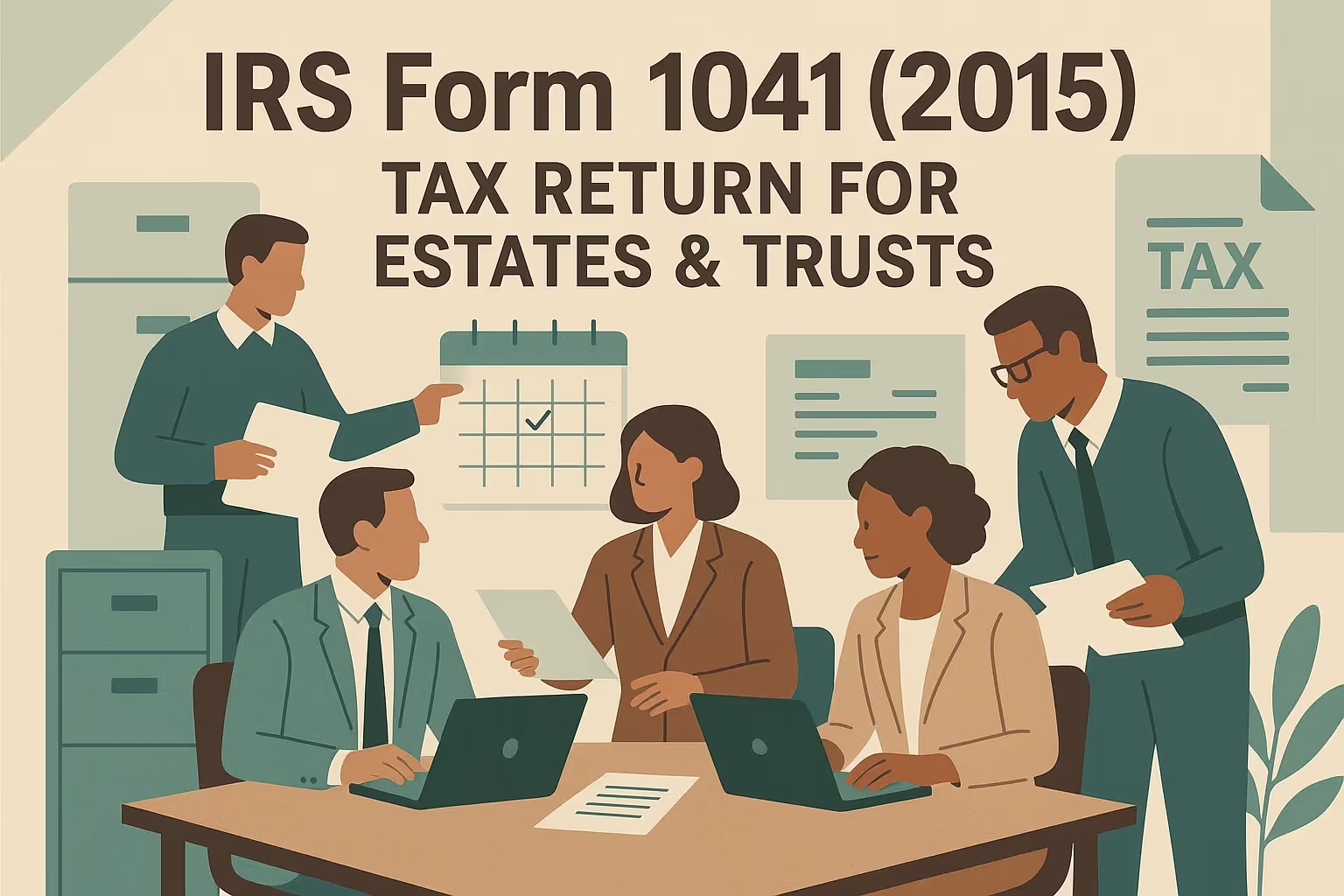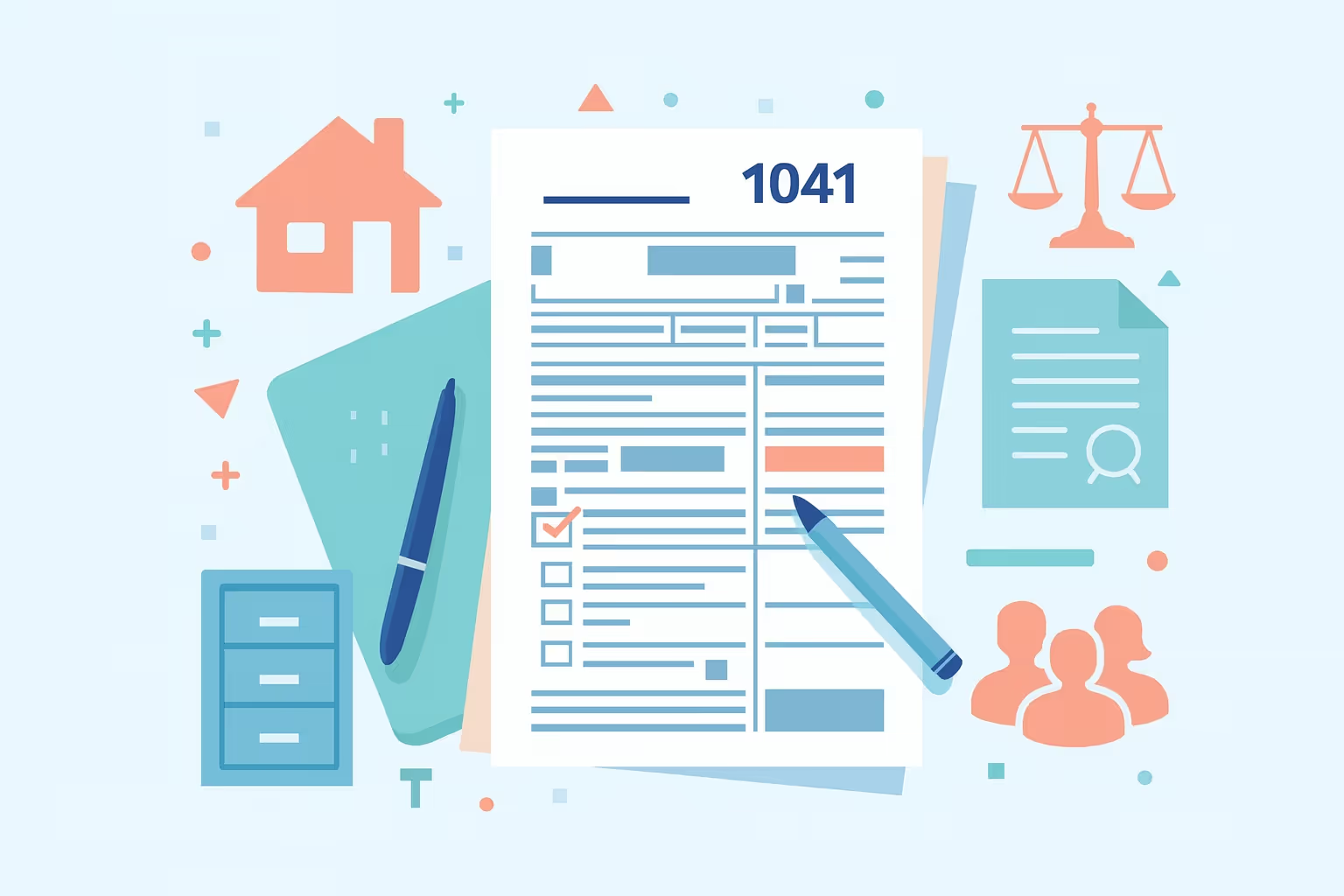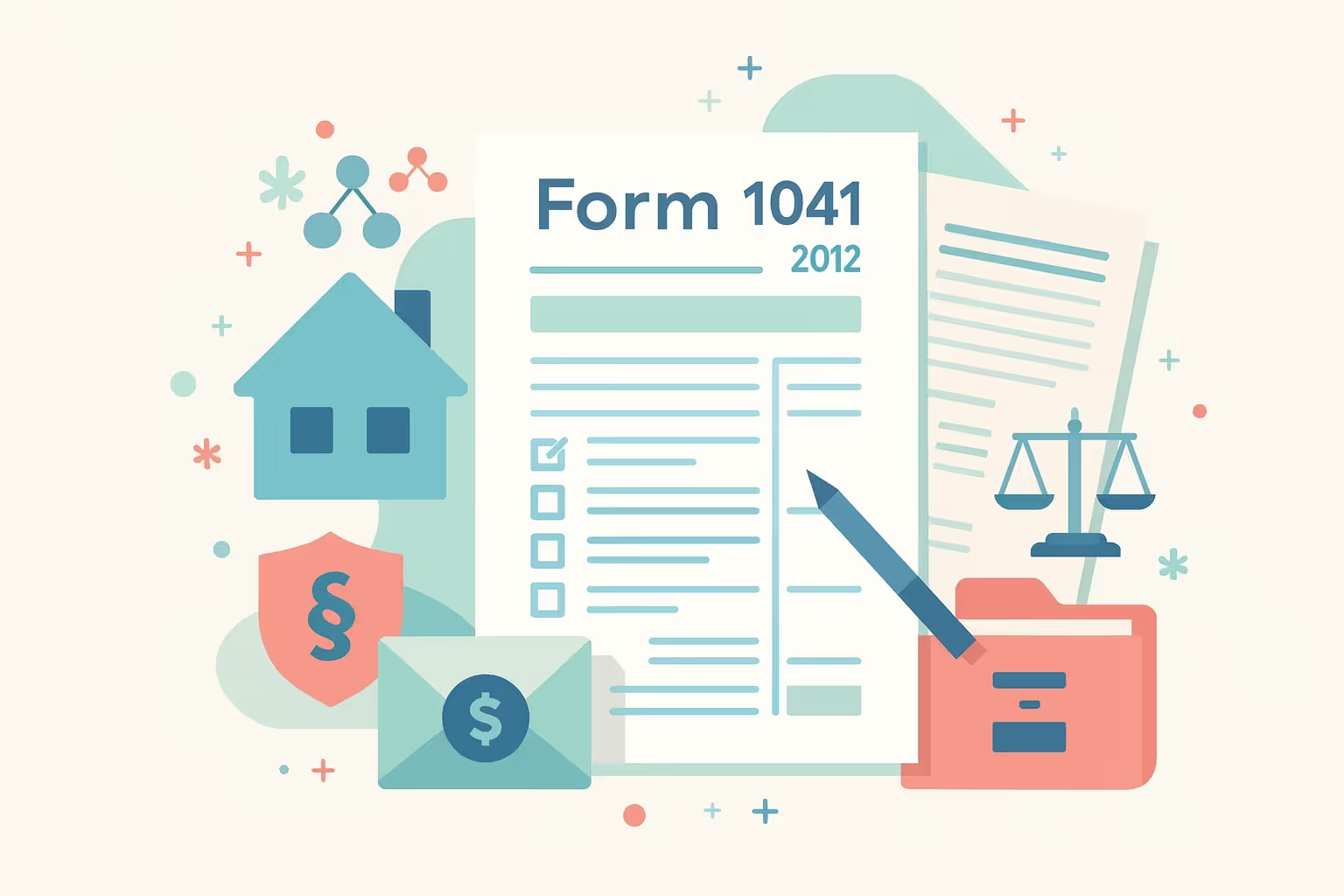IRS Form 1041 (2019): Tax Return for Estates and Trusts
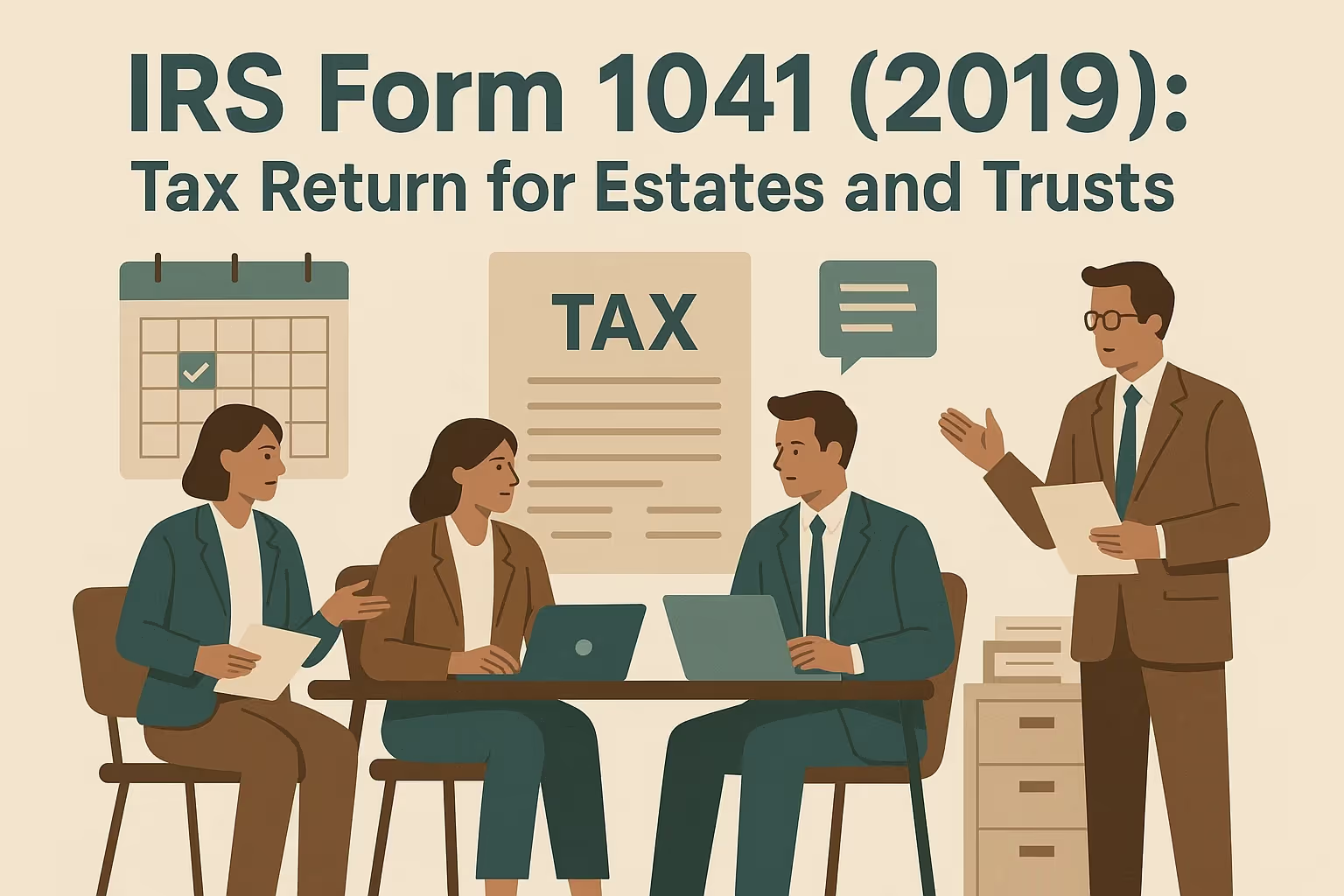
What IRS Form 1041 (2019) Is For
IRS Form 1041 (2019) is the U.S. income tax return for estates and trusts, used by fiduciaries, estate administrators, or personal representatives to report income, deductions, capital gains, tax credits, and taxable income for tax payment purposes. The Internal Revenue Service requires a tax return for estates or trusts with gross income of $600 or more during the tax year, or if any beneficiary is a nonresident alien.
This form is used for estates and trusts that are required to file a separate return under the Internal Revenue Code. Fiduciaries use it to classify income categories reported, including dividend income, interest, trust income, business income, and other distributions. Proper reporting ensures accurate income distribution and compliance with IRS requirements.
When You'd Use Form 1041 for 2019 (Late or Amended Filing)
A fiduciary would file Form 1041 for 2019 if the IRS issued notices for unfiled returns or if unreported estate income or trust income was identified. An estate administrator or personal representative may also file a late tax return to reconcile beneficiary’s share amounts, claim deductible funeral expenses, or resolve issues related to prior filings.
Refunds for the 2019 tax year expired on July 17, 2023, due to COVID-19 extensions. Filing late may help settle compliance matters and demonstrate good faith with the Internal Revenue Service. In addition, filing is necessary if the estate or business entity had reportable income earned in 2019, even if the return is late.
If you are addressing multiple unfiled fiduciary returns or responding to IRS notices, our guide on how to resolve unfiled federal returns can help you determine what additional filings may still be required.
Key Rules Specific to 2019
The following are key takeaways for estates and trusts filing a 2019 income tax return:
- Qualified Business Income Deduction: The 20% QBI deduction is now applicable, with updated requirements for Schedule K-1 and income distribution deduction reporting.
- Standard Deduction: The standard deduction for estates and trusts was $100.
- Qualified Disability Trust Exemption: Qualified disability trusts are eligible to claim up to $4,200 in exemptions.
- Capital Gains: Capital gains rates were 0% up to $2,650, 15% between $2,650 and $12,950, and 20% above $12,950.
- Bankruptcy Estate Threshold: Bankruptcy estates were required to file if the total income was at least $12,200.
- Calendar Year Estates: Calendar year estates are generally filed by the fourth month following the decedent’s death.
If you need support working with older fiduciary forms or specialized IRS schedules, you can use the IRS Form Help Center to locate instructions and guidance for estate and trust filings.
Step-by-Step (High Level)
- Gather records: Collect trust documents, trust instruments, income statements, and proof of income distributed to beneficiaries. Request IRS account transcripts to confirm income earned, taxes paid, and previous filings.
- Use 2019 forms: Complete the official 2019 Form 1041, following the Internal Revenue Code rules for that year. Include all relevant schedules, such as Schedule B, Schedule J, and Schedule K-1, to report deductions, credits, and distributions.
- Attach schedules: Include Schedule K-1 for each beneficiary, listing the beneficiary’s share of income, deductions, and credits. Add other necessary schedules for dividend income, interest, capital gains, and distribution deductions.
- File the return: Mail the paper tax return for estates and trusts to the IRS center listed in the 2019 instructions. E-filing is unavailable for 2019, so paper filing is required. Pay tax using a check or money order to the U.S. Treasury.
- Keep records: Retain copies of the filed tax return, supporting schedules, and proof of payment for tax filing verification and future reference.
If the IRS has issued notices or balance-due letters regarding your 2019 fiduciary return, our overview of the IRS collection process outlines what to expect and how fiduciaries may need to respond.
Common Mistakes and How to Avoid Them
- Incorrect fiduciary information: Enter the correct fiduciary name, employer identification number, and business classification on the form.
- Missing Schedule K-1 details: Ensure each beneficiary receives a complete Schedule K-1 with accurate income distribution details.
- Schedule B errors: Avoid mistakes that affect the income distribution deduction and distributable net income calculations.
- Incorrect year reporting: Confirm whether the estate or trust follows a calendar year or a fiscal year tax period.
- Omitting foreign income: Include income earned from a foreign country or other trusts if applicable.
- Unclaimed deductions: Do not forget deductible funeral expenses, property sales, or assets distributed during the trust tax year.
- Missed estimated tax payments: Make required estimated payments when the expected taxable income exceeds $1,000 to prevent additional penalties.
If penalties apply due to late filing, incorrect beneficiary reporting, or missing deductions, our guide to IRS penalty abatement explains how reasonable cause and first-time abatement may apply to fiduciary tax returns.
What Happens After You File
After the Internal Revenue Service receives the income tax return for estates and trusts, processing typically takes about 12 to 16 weeks. If discrepancies arise between income categories reported and IRS records, the fiduciary may receive notices requiring clarification or adjustments.
Any unpaid taxes will accrue interest and penalties until they are fully paid, so accurate tax filing and timely tax payment help reduce future compliance issues and minor tax corrections in the following year. If the estate or trust cannot pay the full balance due, reviewing how IRS payment plans work can help you determine whether an installment agreement is an option.
FAQs
Can I still receive a refund for 2019 if I file my taxes late?
No, refunds for the 2019 tax year expired on July 17, 2023, due to COVID-19 extensions. However, late filing may still be necessary to settle compliance concerns and protect beneficiaries of the estate or trust.
What penalties will I face for filing my 2019 Form 1041 late?
The IRS assesses a 5% monthly penalty for failing to file and a 0.5% monthly penalty for failing to pay tax on time. Interest is applied to both taxes and penalties until they are fully paid.
Do I need to get account transcripts before filing?
Yes, account transcripts help confirm IRS records, payments, and previous filings, which assist in preparing an accurate income tax return.
How do I handle Schedule K-1 forms for beneficiaries?
Each beneficiary must receive a Schedule K-1 showing their share of income, deductions, and credits. These amounts must reconcile with the trust or estate return to avoid discrepancies.
Can I e-file a 2019 Form 1041 now?
No, the IRS generally allows e-filing only for the current year and the two preceding years. Paper filing is required for 2019 returns.
Should I also file amended state returns?
Yes, most states require amended returns when the federal fiduciary return is amended or filed late. Check with your state tax agency for specific filing requirements.
What if the estate or trust has been terminated?
You can still file the final Form 1041 for a terminated estate or trust. Mark it as a “Final Return,” report all final income and deductions, and provide Schedule K-1s so that each beneficiary receives their final share of the distributed income.

















